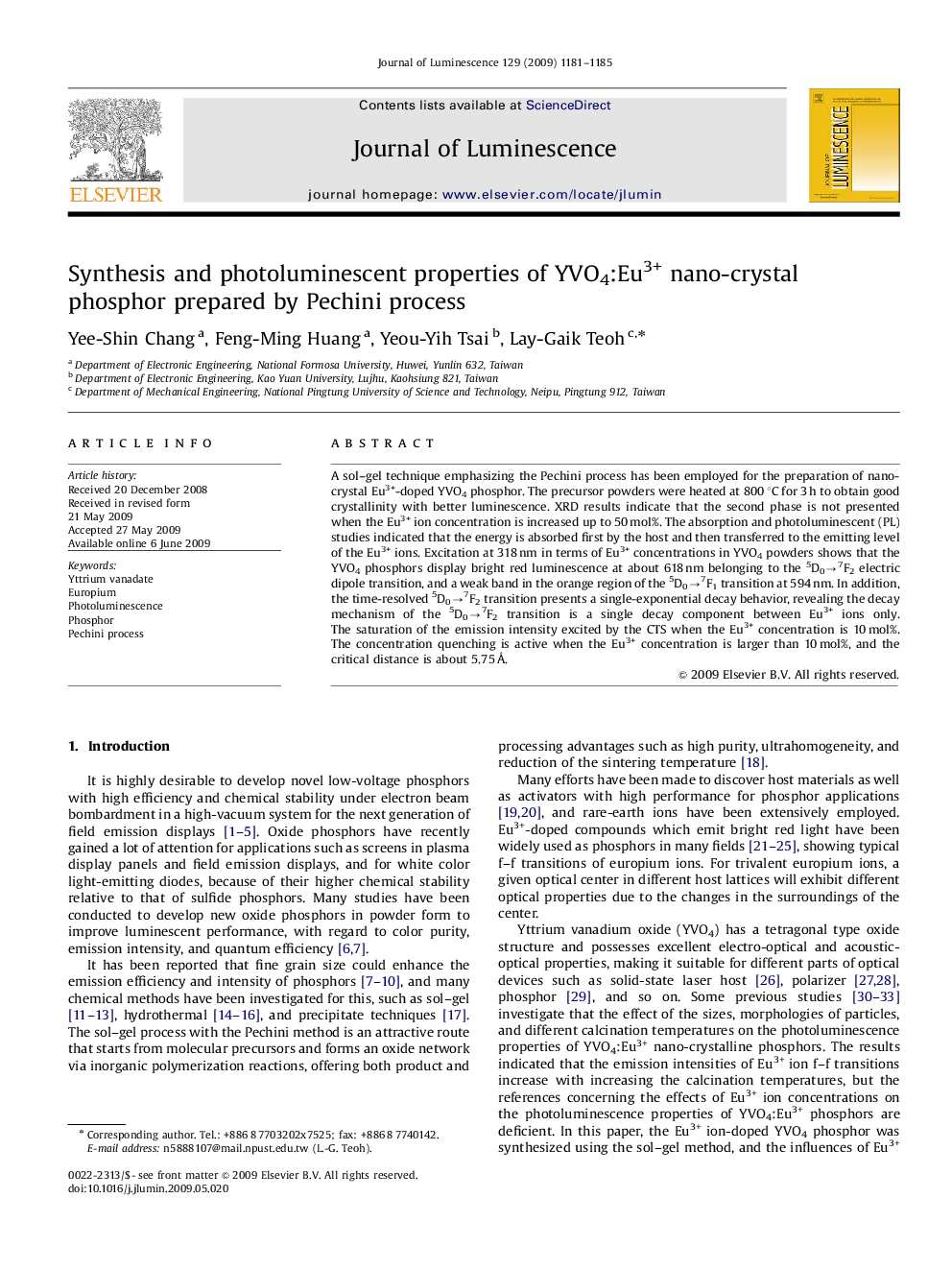| Article ID | Journal | Published Year | Pages | File Type |
|---|---|---|---|---|
| 5402967 | Journal of Luminescence | 2009 | 5 Pages |
Abstract
A sol-gel technique emphasizing the Pechini process has been employed for the preparation of nano-crystal Eu3+-doped YVO4 phosphor. The precursor powders were heated at 800 °C for 3 h to obtain good crystallinity with better luminescence. XRD results indicate that the second phase is not presented when the Eu3+ ion concentration is increased up to 50 mol%. The absorption and photoluminescent (PL) studies indicated that the energy is absorbed first by the host and then transferred to the emitting level of the Eu3+ ions. Excitation at 318 nm in terms of Eu3+ concentrations in YVO4 powders shows that the YVO4 phosphors display bright red luminescence at about 618 nm belonging to the 5D0â7F2 electric dipole transition, and a weak band in the orange region of the 5D0â7F1 transition at 594 nm. In addition, the time-resolved 5D0â7F2 transition presents a single-exponential decay behavior, revealing the decay mechanism of the 5D0â7F2 transition is a single decay component between Eu3+ ions only. The saturation of the emission intensity excited by the CTS when the Eu3+ concentration is 10 mol%. The concentration quenching is active when the Eu3+ concentration is larger than 10 mol%, and the critical distance is about 5.75 Ã
.
Related Topics
Physical Sciences and Engineering
Chemistry
Physical and Theoretical Chemistry
Authors
Yee-Shin Chang, Feng-Ming Huang, Yeou-Yih Tsai, Lay-Gaik Teoh,
